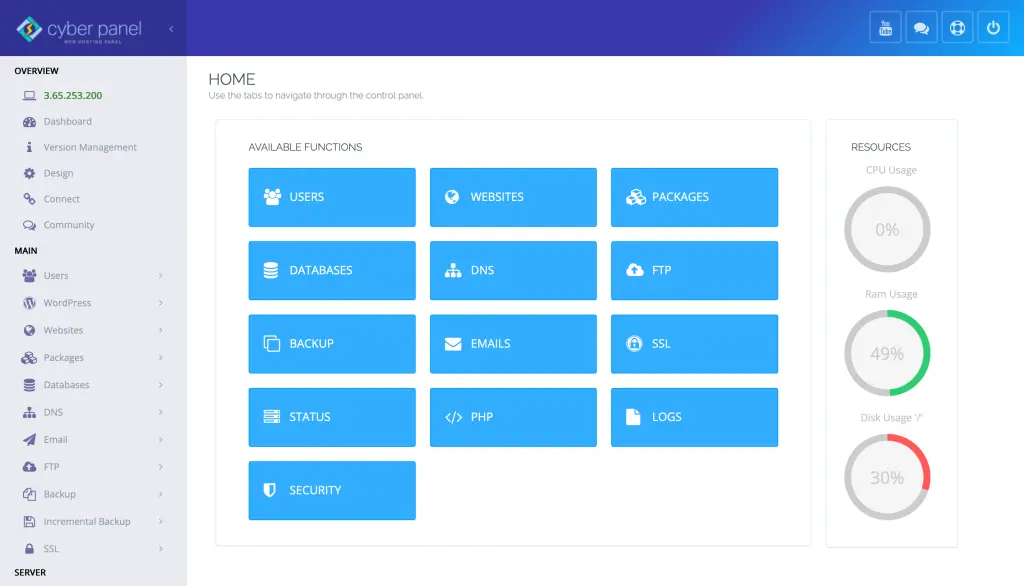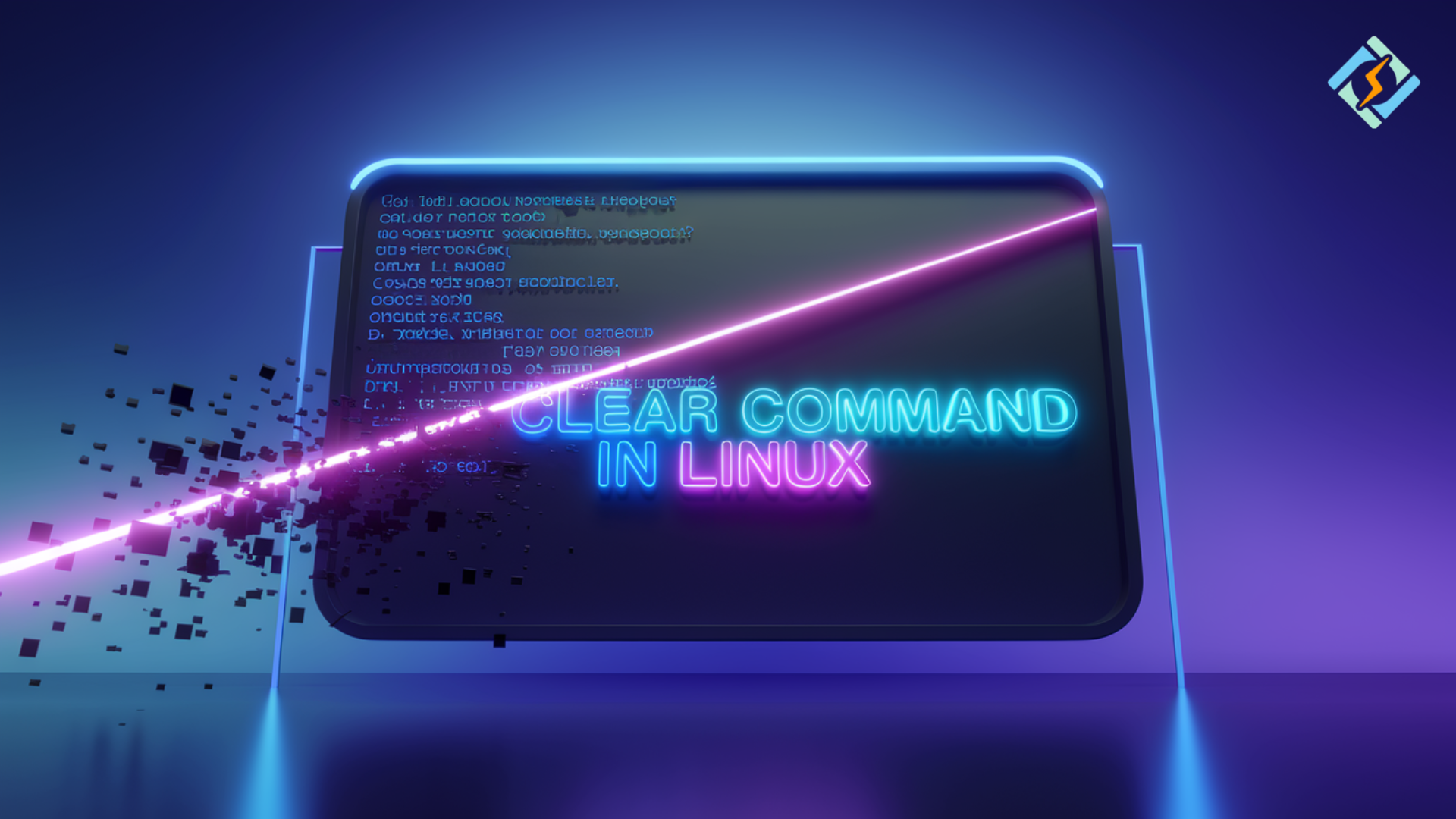Do you find yourself lost in a cluttered terminal, unable to locate commands you used recently? When you are working in Linux, one of the commonly done tasks is using many commands one after another, which ultimately leaves you with your screen filled with unwanted text. This is where the clear command in Linux comes into play.
Press one button, and your screen refreshes on the fly, decluttering it and enabling you to focus on what you need. What if you want to wipe command history as well, for security or privacy reasons? Or maybe you want other ways to clear your screen instead of using the clear command alone?
By the end of this guide, you will have the theoretical knowledge as well as real-life command outputs so you can navigate your terminal with ease to streamline your productivity in your workflow.
Clear Command in Linux
Using the clear command in Linux removes all the visible text from the terminal window, and is a simple and effective method. But it doesn’t end the session or delete any command history — just offers a clean slate.
Why use clear command in Linux?
- Removing unnecessary clutter increases visibility.
- Improves looking into recent commands.
- Works with most common Linux shells (Bash, Zsh, Fish).
- It does not erase history, making past commands retrievable.
How to use Clear Command in Linux
Using the clear command in Linux is as easy as typing:
Get exclusive access to all things tech-savvy, and be the first to receive
the latest updates directly in your inbox.
clear✅ This will immediately remove all previous output from your screen.
Shortcut to Clear the Screen
Instead of typing clear, you can press:
Ctrl + L???? This shortcut is faster and works the same way as clear.
Linux Clear Command History
While the clear command in Linux refreshes your screen, it does not delete command history. To remove past commands, follow these methods.
Method 1: Remove History from the Current Session
history -c✅ This clears the command history only for the current session.
Method 2: Delete History Permanently
To clear history from Bash’s history file, use:
cat /dev/null > ~/.bash_history && history -c✅ This removes all saved commands and refreshes history storage.
Method 3: Remove a Specific Command from History
Find the command’s history number by running:
historyThen, delete a specific entry using:
history -d <history_number>Method 4: Prevent Linux from Saving History
To permanently disable history, add the following line to ~/.bashrc:

export HISTSIZE=0✅ This ensures that no commands are stored in history.
Linux Clear Screen Command
Apart from using the clear command in Linux, you can clear the terminal screen in other ways.
1. Using the Reset Command
reset✅ Resets the terminal as if it was restarted.
2. Using an ANSI Escape Sequence
echo -e "\033c"✅ Sends a command to refresh the screen like clear.
3. Using Keyboard Shortcut
Ctrl + L✅ Works just like clear, but faster!
4. Clearing Terminal Output in Scripts
If you need to clear the terminal inside a shell script, add:
#!/bin/bash
clear✅ This ensures the terminal is cleared every time the script runs.
Difference Between Clear Command and Reset Command in Linux
| Feature | Clear Command in Linux | Reset Command in Linux |
| Effect on Terminal | Clears only visible output | Fully resets the terminal |
| Command History Deletion | ❌ No | ❌ No |
| Keyboard Shortcut | ✅ Ctrl + L | ❌ No |
| Speed | ✅ Fast | ❌ Slower (resets settings) |
| Use Case | Refresh screen quickly | Fix broken terminal sessions |
Role of CyberPanel

Clear command in Linux is a simple and clear function of the command line. However, CyberPanel is a basic device to manage Linux servers. CyberPanel is an open-source web hosting control panel that gives you the necessary tools to manage terminal commands and it makes it easy to administer your website.
How CyberPanel Helps in Terminal Management?
✔ Terminal – CyberPanel also comes with a Linux terminal, where you can run clear, history -c, and reset.
✔ Log Management – monitor and delete logs so as not to clog storage.
✔Command Execution Tracking – CyberPanel offers executed command tracking for the sake of an effective system.
How to Manage Linux Terminal with CyberPanel
1️⃣ Move to Terminal for CyberPanel by logging in
2️⃣ Run commands such as:
clear
history -c
reset3️⃣ Check for system logs that are either added or have unnecessary history. CyberPanel provides tools for log management directly from the control panel.
FAQs: Clear Command in Linux
1. What is the clear command in Linux?
The clear command in Linux clears the current screen of all the visible text while keeping the terminal window open.
2. Does the clear command in Linux delete history?
No, a clear command in Linux just clears the display. You have to use history -c to clear out history.
3. What is the shortcut key to clear the screen in Linux?
Type Ctrl + L to quickly clear the terminal screen.
4. How to clear command history in Linux?
Running history -c clears all history for the current session.
5. What are the differences between clear and reset?
clear will remove the text but keep the session active.
reset completely resets the terminal to avoid possible mishaps.
Wrapping Up!
To sum up, the clear command in Linux is a very easy but important command used in order to keep your terminal clutter-free. Whether it’s removing unwanted output, clearing command history, or simply resetting the terminal, Linux has multiple ways of doing this.
CyberPanel is an advanced log and command management with an easy-to-use system that makes Linux server administration manageable.
Start using the Linux clear command now, enhance workflow, and keep your terminal organized!



